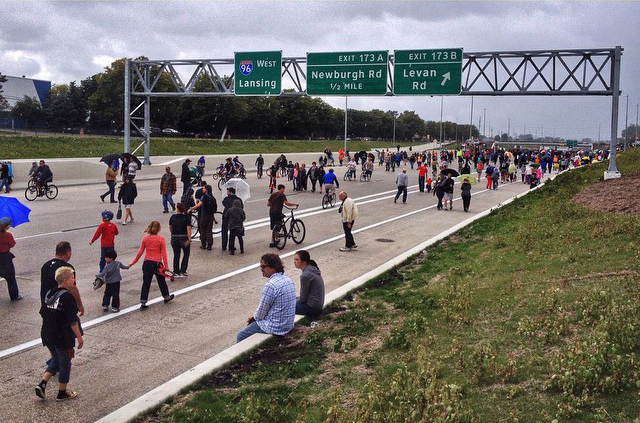New York may have dominated headlines regarding big tactical urbanism efforts in years past. But it’s New York’s near neighbour Philadelphia that might be the U.S’s real tactical capital. Rife with small-scale interventions making for a big collective change, Philly’s upswing in public space improvements is changing the way other cities do pop-up.
Calling all tactical efforts in the city ‘small’ might be selling things short. The city’s newest parklet was just installed near Penn’s campus, and it’s massive. At 60 feet (18m) its one of the longest parklets ever built.
West Philly Parklets. Source: newsworks.org
It’s one of 5 major parklets scattered around the neighbourhood. UCD, the local community organization who maintains them, recently published the nationally-acclaimed study: "The Case for Parklets: Measuring the Impact on Sidewalk Vitality and Neighborhood Businesses." The study provided data and recommendations based on a multi-year analysis of parklets and their ability to bring more life to public spaces.
The study has given pop-up efforts the quantitative bona fides to make similar improvements across the country. But in Philly, anecdotal evidence has fueled pop-up success; none more so than the buzz behind the now infamous Philly beer garden scene.
Beer garden pop-ups like the Spruce Street Harbor Park, The Oval and the PHS Pop-Up Garden have become some of the city’s most popular summer destinations. And for good reason – they’re awesome!
Spruce Street Harbor Park. Source: wheretophilly.com
The Spruce Street Harbor Park has so far been the stand out. The temporary summertime village is now in its second year and has upgraded the down and out waterfront area with a floating restaurant, weekend beer garden, hammocks, shuffleboard, and hundreds of thousands of visitors.
And in true pop-up style, the space’s cheep and cheerful successes have drummed up support for long-term solutions for improving the waterfront. Above all, this is the true power of the pop-up paradigm and one that’s been observed for years. Short-term improvements can and do lead to long-term change.
So it's no surprise that across town Philly’s most famously awesome pop-up, The Porch, has now began to improve with permanent features. The Porch started as a temporary experiment to breathe life into what was a parking lot next to 30th Street Station, the City’s main transport hub. That was 4 years ago. Now the folks behind the Porch have teamed up with Groundswell Design Group and Gehl Studio to enhance the space with more permanent planters, seating, lighting and food options that compliment the popular programming schedule.
The Porch. Source: vixemporium.com
The City of Philadelphia has also taken note of this movement across its city. In recent years they’ve implemented a Pedestrian Plaza Program to grease the wheels for neighbourhood groups to build their own pop-ups, and with a solid revenue stream from city coffers. That too has been pretty awesome for improving open spaces in Philly’s neighbourhoods.
If the past is a measure of future successes, it isn’t likely Philly’s pop-up revolution will slow down. Maybe we’ll see floating beer gardens down the Delaware next year? Or roller skate rinks along Market Street? At this point, nothing seems totally off limits. Lets just hope it stays as equally awesome as years past.
Greg Meckstroth is a certified planner, award winning urban designer, and published writer, Greg's passion for cities and placemaking extends across various spectrums. Connect with Greg on twitter here.


